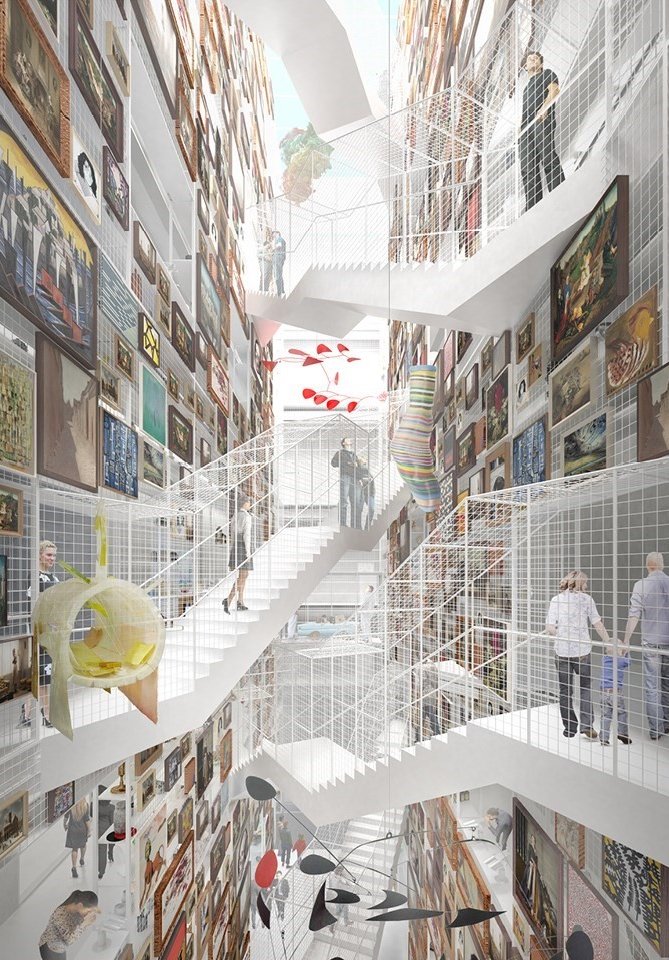Virtual depot: behind the scenes of museums
Storage facilities of museums house over 90% of the collections of most museums. The project ‘DIPOT: Digital depot’ explores how these spaces can be made accessible through VR technologies. This would help not only to open up the collection to a broader public, but also to improve the design of future museums’ storage facilities.
Researcher Marzia Loddo received a grant from the Marie Skłodowska-Curie Horizon 2020 co-fund programme ‘LEaDing Fellows’ to conduct the research project. The aim is to create a dynamic virtual representation of art collection storage facilities as a learning resource. This representation can build critical engagement between the art collections and the general public, and improve future depot design. Under the supervision of Marie-Thérèse van Thoor, Loddo will study the transformation of museums’ buildings in the Netherlands after the 1990s, focusing particularly on storage facilities. Based on their findings, she will develop a virtual model that can be used by museums.
Museums are the keepers of human cultural and anthropological heritage and attract many visitors every day. Most of them do not know that what they see is only the tip of the iceberg. In fact, for most museums, 90% of the collection is kept in storage facilities. Those are not always seen by the general public and remain neglected spaces in many museums, playing only a marginal role in museum activities. However, these depots are the cores of the museums and are more than mere repositories. Depots are also locations where many activities take places, such as exhibitions, education, and research programmes.
It is believed that in about 60% of institutions worldwide, the storage areas are in such a poor condition that using the collection for any museum activity has been rendered entirely impossible. There is a tacit assumption that collections, and the individual objects there within, will always be there. The stark reality is that without adequate support and attention, public collections are continuously at risk. Therefore, it is crucial to continue researching, understanding and advancing storage techniques as well as communicating about these public collections.
The Netherlands is considered a global front-runner in the development of museum storage facilities. A significant museum transformation campaign has been conducted over the last thirty years. This campaign was led by the Rijksmuseum Amsterdam, and followed by many others like Paleis Het Loo in Apeldoorn, Nederlands Openluchtmuseum in Arnhem, the Cultural Heritage Agency of the Netherlands (Rijksdienst voor het Culturele Erfgoed), and Museum Boijmans Van Beuningen in Rotterdam.
Digital deposit
DIPOT is structured in two main phases. The first investigates the various narratives of the museum transformations in the Netherlands after the 1990s in all its complexity. This includes cultural, political and economic aspects, and leads to an understanding of why and when museums have started to diversify deposits.
Different case studies and perspectives from, amongst others, directors, designers, curators, researchers, and the general public will generate the necessary understanding.
The second phase will include the creation of a digital deposit. A collaboration with a museum with a digitised collection will create the opportunity to design a 3D model or 360° image of the deposit. Developing of this novel imaging systems will clarify the role of new technologies in the perception and understanding of cultural heritage. Specifically, this digital depot will show how 3D virtual replicas of museum deposits can re-define museum practices, promote better understanding for the general public and educate a future generation of designers. The use of VR technology builds upon the existing digitisation of collections already undertaken. Moreover, VR makes these existing digitised collections accessible to future visitors and scholars in an entirely new and unprecedented way.
More information
For more information, please contact project coordinator Marzia Loddo (AE+T).
